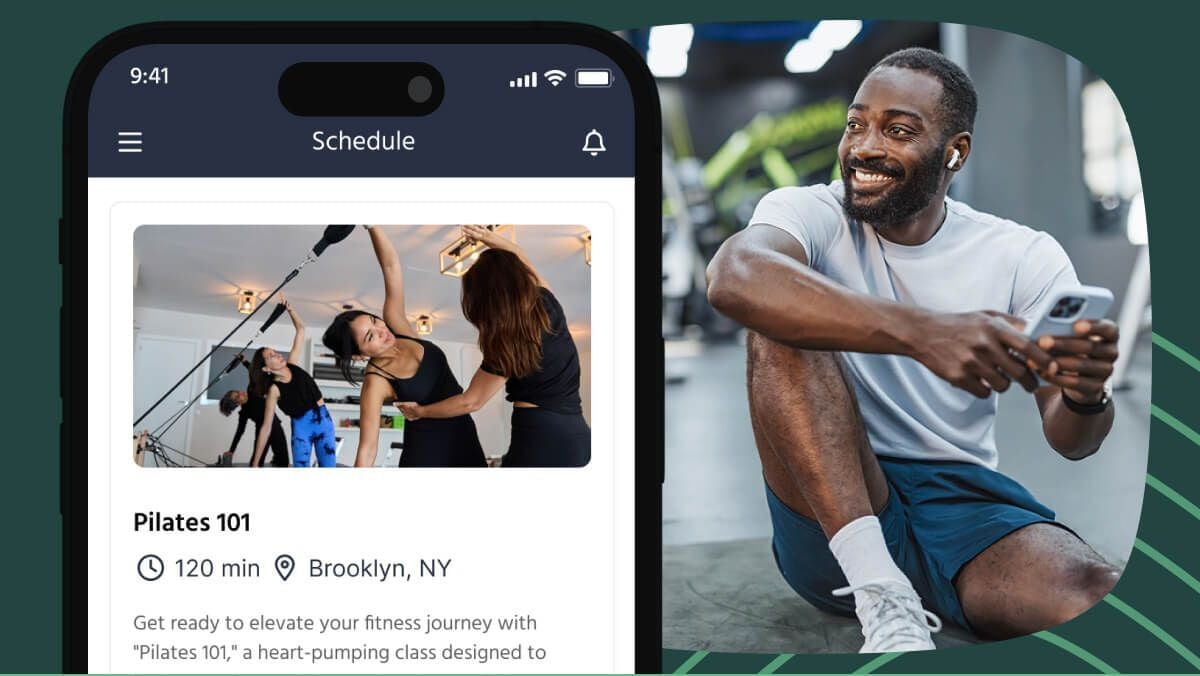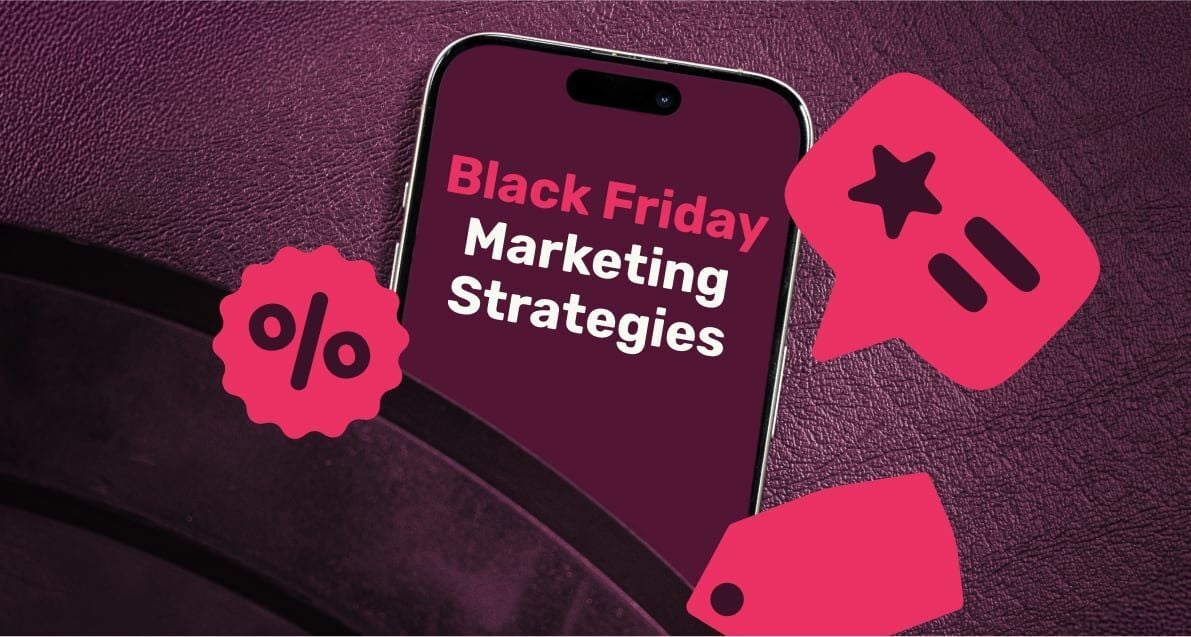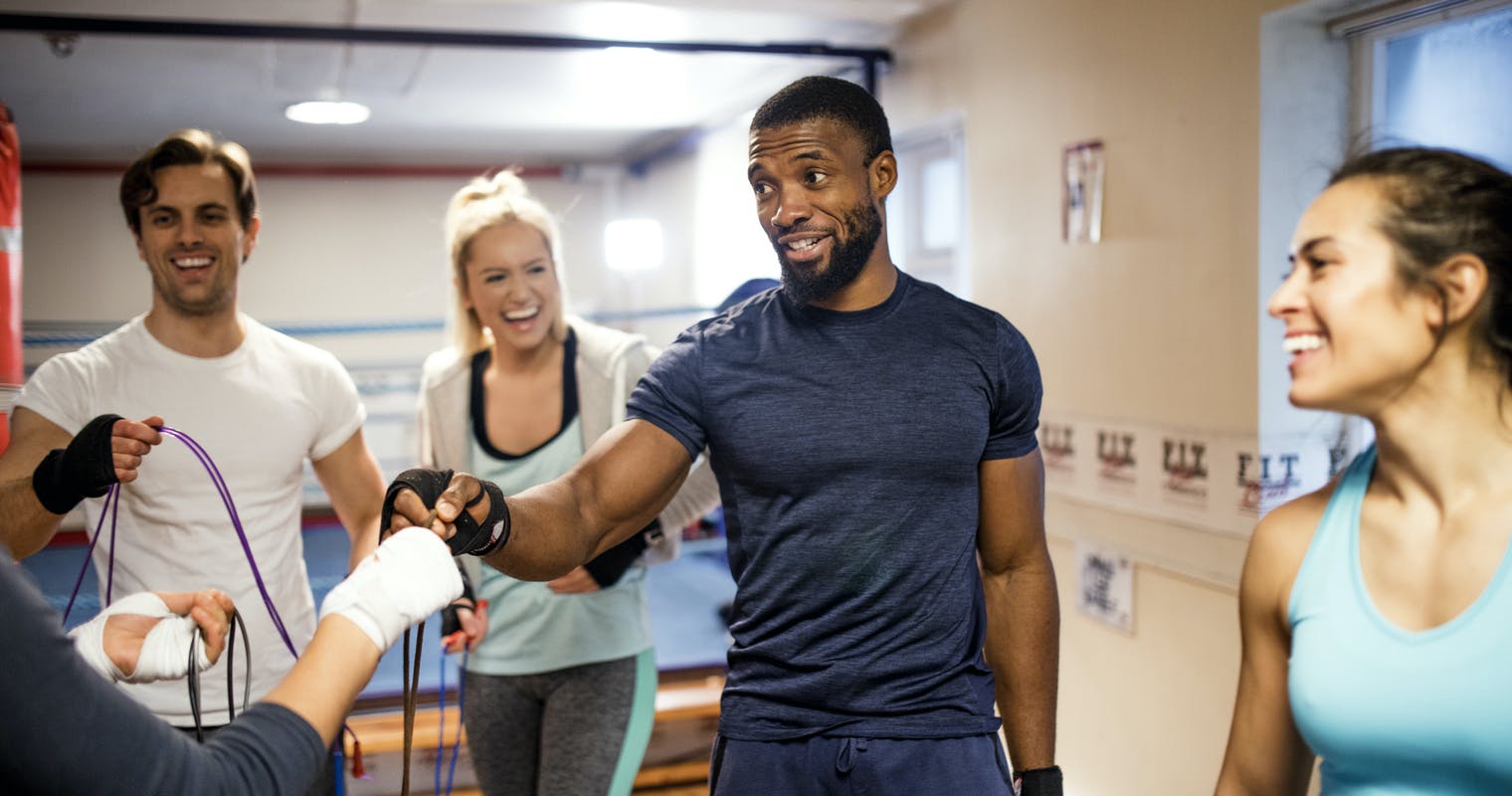2023 is all about community and we’re delighted to share the story of Yoga for AS and how Jamie Boder and Geoff Lindsay built their community.
When Jamie Boder was diagnosed with Ankylosing Spondylitis he was frightened of the future ahead, yet resolved that he could find a way to overcome the challenges and pain he’d have to face. He turned to a support group to find comfort in those sharing his experience and there met the man that would change his life, become his business partner, and together help thousands of people with AS through their business Yoga for AS.
Jamie and Geoff’s story is an incredible demonstration of finding an important need and dedicating their lives to helping others find relief from pain, renew their lease on life, and grow stronger together. Jamie was so kind to share his journey with us and we know you’ll enjoy learning more about Yoga for AS and the incredible work they’re doing for their community.

How did you begin your journey with yoga?
When I was 18, I was diagnosed with a form of inflammatory arthritis. There are a couple of different names for it, but most people know it as AS, or ankylosing spondylitis. When I was diagnosed, I couldn't walk. I was in a lot of pain and I was told that I’d have this condition for the rest of my life and that it would worsen and progress. It was very scary and if you look online it’s even scarier. It was a really dark moment.
I reluctantly went to a support group and a lot of people there were struggling, had fusion in their spine, and suffering from progression of the disease. But, there was one man who was standing upright, looked healthy, had good posture, and had even cycled to the group.
I asked him what he was doing differently and he said he started a yoga practice when he was in his thirties and forties and modified it for a very long time to his condition. He didn’t know at the time he had even had a condition, but just that he found yoga and it made a major difference in how he felt and could move.
That day he gave me my first session. I felt better. I felt lighter.
What inspired you to start Yoga for AS?
At that moment, after my first class I decided I wanted to teach yoga modified for this condition to as many people as possible. I went on to become a qualified yoga teacher, and then Geoff, my business partner, and I came back together years later and started an online community via a Facebook group.
I thought we’d have a couple of people join at first. Now we have over 3,000 people in the group talking and interacting with each other. It’s a nice tight knit community and it’s a very positive community that typically doesn’t exist online.
When the pandemic started we asked people if they’d like us to start doing some classes, and they were receptive to it. That’s really what started the business.
We started doing one-to-one classes and now we’re at the point where we deliver weekly classes through TeamUp. It’s an online business with everything online for now. We’re the only organization globally that really delivers very specific yoga through different platforms and services for people with this condition. We have tried to get it to the point where it’s very scalable, accessible, and user-friendly.
What makes the Yoga for AS community stand out amongst other yoga communities?
I think the first thing is that we both have the same condition. People with long term health conditions are sold a lot of products and things that they’re told will work and then go down a rabbit hole and end up spending a lot of money without getting any results.
People instantly found that they trusted us more and I think rightly so because we are two people with AS. We found that this yoga really helped us and we wanted to show others. It reflects a hero’s journey narrative, which in marketing is a very strong thing.
We need a story that brings people into the idea of that hero’s journey and engages people to become a hero on their own journey. It’s not about us. We're on the same journey together. We're just a couple of steps ahead and we want to show a few things that have helped us, what we deliver, and how we do that and use the interactions we have with people to iterate and get better.
As a startup you have to start with a very small product and use peoples’ feedback. Use their responses to get better and don’t think that you have to have everything figured out straight away, but start doing something.
How can fitness business owners encourage people to join their own communities and service?
One of the most powerful ways to influence people is truth, as opposed to theory behind that truth. Geoff showed me a class and I felt better, so that was enough for me to realize there’s something to this. Not just yoga, but something I could do to make myself feel better despite having this condition. At the time there was constant pain, stiffness, and also I felt trapped mentally and emotionally. I felt that there was never going to be a time where things would be better.
In the wellness industry in general, there's a lot of blogs and videos on ‘why this is good’ and ‘why this is good’. But at the end of the day, it's getting people as quickly as possible to experience and interact with this practice, whatever that practice may be, that's what tends to actually encourage people to take up a new wellness practice. If people can feel something has made them feel better, then this speaks a thousands words
Therefore, it's not me going, ‘Oh, but do you know that this could help you, and this is why?’ That's never the conversation that we have. It’s all about experiencing it and how it feels. What do you feel like now compared to when you started? Those are the questions that are really important. You are the vehicle to show people the practice they can explore for themself and feel it in their own bodies and have their own experience.
What are some of the services you offer your community?
We realized very early on that we couldn’t just teach from our experience because there are about nine different ways that AS presents itself. We have developed and adapted yoga with modifications so that we can meet the needs of anyone with this condition. Our main two services are offered through the Live Online Classes and the Virtual Yoga Library.
We started by offering content through videos. We did free YouTube videos. We started with value right off the bar. I think we live in an age where value needs to be given first. It is important for people to experience for themselves firsthand before they make a commitment.
It doesn’t mean that you can just give everything away because you have to value your own service, who you are, and the work and time that’s taking you to that point. We started with the YouTube videos, and then we did live classes, but we gave the first class for free. We have a reasonable price for our classes and courses.
We originally started our classes on Eventbrite and then decided to switch over to TeamUp which works a lot better and is a lot less work. It’s a lot smoother and a better experience for many reasons. We are planning to also do some in-person classes in the future.
How are you engaging with your community outside of classes?
We aren’t a business that has thousands of customers yet, so we’re in a position to email people and say “How are you getting on with the classes or courses?” It’s actually as simple as that. It’s something that’s overlooked. Quite often people in an early stage startup, can have 200 customers and still be able to do this.
Literally just asking people, ‘How are you doing?’ ‘How are things going?’ ‘Is there anything that we can do to help?’ ‘Are there any questions you have?’ It's that sort of feedback early on that helps you want to serve those people better and to become better at what you do. I think people have the idea that they can't message every single person because that's not sustainable. It is at the early stage and it will teach you more than you can ever imagine.
The founders of Airbnb went into people's houses where they were staying and said, “we are the photographers, can we ask you some questions about how your stay has been here”. They were of course actually the founders and wanted to get some feedback. It was that feedback early on that made them who they are today, and I think it's really important to ask people how they are and make them feel supported.
That could be from an email, or Zoom call, or a phone call. You can have a business WhatsApp, message them, check in on them. We have the Facebook group as well as other social media.
Peer to peer support
We want to try to build peer to peer support as well. User generated content within a community is really helpful because then it's other people helping other people, which is really lovely. Someone posts asking for recommendations and it's not Geoff and I that always has to reply. Building an environment where people can feel they can support each other is what it’s all about.
How do your clients’ personal communities help support their journeys alongside Yoga for AS?
Geoff was a social worker for most of his career. He’s absolutely on board with carer involvement. A lot of people don’t like the idea that they have a carer, someone taking care of them. When I was diagnosed, I definitely didn’t see it that way. But the reality is everyone has a carer, even if you don’t have a long term health condition.
It’s usually a relationship between someone being a carer and also being cared for. It’s a really important thing that we try and build into this business, making sure that the carer is also involved. We have sessions where we offer measurements and basically measure your movement and how this disease has affected your movement.
It’s like an official standard measurement that is used universally to measure that but you usually need a partner for it. We have had people come in and done these measurements with their partners, friends, family. We have had a few one-to-ones where we’ve also had their significant others in the call as well.
What’s one of your favorite success stories?
A while back, a student just said in a class, “My life is better.” And I asked “What do you mean,” and he said it’s just that because of this it’s helped all the other aspects of his life. That’s what our mission is. It’s not about helping the condition, it’s about the condition as something the person experiences. When you have a long term health condition, it’s not something in isolation to that whole person.
Their social life experiences the condition, their emotions experience it, their physical body, everything. If someone’s life can get better, that’s a huge win.
We also have had people say that they’re able to start doing sports. They’ve gone back to the rheumatologist and their scores have improved. These are all very good things to hear.
What are your plans to grow your Yoga for AS community in 2023?
Our idea bucket is completely flooded. You have all these ideas and then have to think what can we actually do, what’s in the pipeline now and you push those through. But the second you move onto a new idea that generates five more and more, and you just keep adding.
We have had a lot of people ask if we’re going to do teacher training as well as interest from other yoga teachers who have this condition as well and have joined the community. We want to create more content and include our community in creating it. We have many videos on our website of our customers showing how accessible and universal yoga is for everyone.
We’ve had a lot of people send really amazing testimonials. They’re so lovely, they bring me to tears. We are releasing a documentary in 2023.
Video: Jamie why he chose TeamUp to manage Yoga for AS
The fact it's automated is good and I recommend it to anyone that I know that wants to start a kind of online class platform.
Thank you so much for sharing, Jamie! To learn more about Yoga for AS, follow along on their Instagram and YouTube pages.









